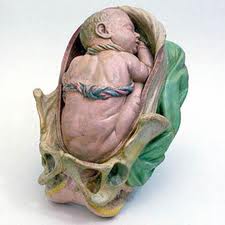Caesarean Abnormal presentation of the fetus at birth
What do we talk about?
Caesarean section is a surgical procedure that involves extracting the unborn baby by cutting the abdomen and maternal uterus. The two main reasons for the practice are in order of frequency:
- The disproportion between the maternal pelvis and fetal volume (see record Caesarean section for maternal pelvis disproportion / fetal volume)
- Abnormal position of the baby at birth.
Depending on its cause, cesarean section may be performed in an emergency or be programmed in advance (usually 8-10 days before the theoretical date of term).
What is an abnormal position of the child at birth?
During childbirth, 95 times out of 100 the baby's head engages primarily in the pelvis, with his face towards the outside (called cephalic presentation).
When the head is thrown back completely, it impedes the delivery of the baby, cesarean section is required. This is also the case in the presentation front (head is in middle position), and during the presentation by the shoulder, called transverse when the child presents horizontally.
In breech presentation (breech known, 3 or 4% of births), it is the buttocks or feet come first, with the risk that the child's head stuck in the basin. In this case, the decision belongs to the doctor and obstetrician decides based primiparity (first pregnancy of women), often decisive criterion.
There are other indications of cesarean section, as multiple pregnancies where caesarean section is not compulsory but more frequent than in singleton pregnancies. It may also be a scar on the uterus (uterine scar), usually a result of a previous cesarean section. It may also be the need to terminate the pregnancy before the end when his extension poses major risks to the fetus or the mother, toxemia, diabetes, hypertension ... Or even an unforeseen complication occurring during childbirth itself: absence of cervical dilation, hemorrhage, abnormal fetal heart rate.
The course of the cesarean
It takes place not in the delivery room but the operating theater and under anesthesia, mainly epidural. It is almost always preferable to general anesthesia: the woman remains conscious and can attend the birth and the postoperative course is much simpler. The pubis is then shaved, a urinary catheter is in place.
The incision is horizontal in the vast majority, just above the pubic bone (called Pfannenstiel). It is more aesthetically hidden by pubic hair, but stronger than the vertical incision (in the middle of the abdomen), now abandoned.
The surgeon then incises abdominal muscles that are discarded. Finally, the incision of the uterine cavity allows the doctor to remove the baby.
Cut the umbilical cord, the placenta is removed by hand and then the uterus and the layers of tissue (plans) are closed, the skin is sutured (staples or son).
Most often a drain is placed to prevent hematoma under the scar, and removed two days later. Anesthetic intravenously over 24 hours can be injected at the request of the patient.
Alerts: If you want to know more fresh update helpful articles enter your email address below and be notified by mail.









